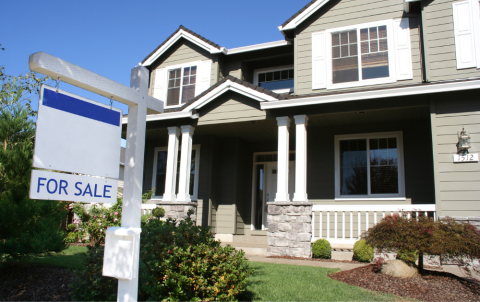Increasing mortgage interest rates and home prices have rapidly made it much more difficult for Vermonters to purchase their first homes. About half as many renters can afford to purchase their first home in 2022 compared to 2021, based on VHFA’s recent analysis of sales price and interest rate trends.

National mortgage interest rates rose substantially from 2021 to 2022. The 30-year mortgage interest rate increased from 2.74% in January 2021 to 5.52% in June 2022. Meanwhile, Vermont’s home prices were also rising. The median primary home sold for $259,900 in January through June 2021, increasing to $295,000 in 2022.
The increase in homes prices and mortgage interest rates have combined to dramatically increase the cost of a monthly mortgage payment. From January to June 2021, the median Vermont home purchase at average interest rates would require a monthly mortgage of around $1,710, when factoring in estimated private mortgage insurance (PMI), home insurance and property taxes. In 2022, that median home would cost $2,192 per month, a 28% increase.
This means that the income needed to afford that purchase has also increased, from an estimated $68,394 in 2021 to $87,671 in 2022. Buyers will also need around $27,000 in cash on hand to afford a 5% down payment and closing costs.
| January-June 2021 | January-June 2022 | |
|---|---|---|
| Vermont median primary home price | $259,900 | $295,000 |
| Average interest rate on 30-year mortgage, no points | 3.11% | 4.72% |
| Monthly mortgage payment (includes mortgage, PMI, insurance, property taxes) | $1,710 | $2,192 |
| Income needed to afford | $68,394 | $87,671 |
| Estimated Vermont renters with enough income to purchase median priced home | 24,500 | 11,100 |
The increase between 2021 and 2022 in the income required to purchase a median priced home would have priced out around 13,400 Vermont renter households, which represents over half of the renter households who could have afforded a home in 2021. Today, only around 15% of renters can afford the median home price. That number likely overstates the total renters who can afford the median home, as factors like credit history, other major expenses like childcare and student loans and the ability to save for a down payment can provide additional barriers to purchasing a home.
Vermont’s experience was mirrored across the United States. Nationally, the median home price rose to $391,200 and income needed to afford increased 35% from 2021. Although Vermont experienced unusually high demand during the pandemic, the impact of higher mortgage rates and a substantial, long-term shortage of homes were felt in most parts of the country.
Vermont Housing Finance Agency (VHFA)’s homeownership programs remain an important resource to help first-time buyers who might otherwise be priced out of the market. VHFA benefits include up to $15,000 in down payment and closing assistance as well as savings on closing costs and annual federal tax credits.

